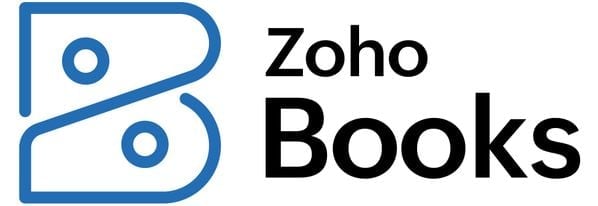Burden Rate: Definition and Formula
The burden rate can help you target profitability by exploring the relationship between direct and indirect costs.

Many, or all, of the products featured on this page are from our advertising partners who compensate us when you take certain actions on our website or click to take an action on their website. However, this does not influence our evaluations. Our opinions are our own. Here is a list of our partners and here's how we make money.
Burden rate highlights the indirect costs associated with producing or delivering a product or service. Businesses calculate burden rate to compare direct and indirect costs and find out more about how much it costs, in total, to provide their products or services.
Direct costs are the costs that go directly into the production or delivery of a product or service. In accounting, these costs are typically categorized as cost of goods sold and are factored into the gross profit. Indirect costs, or overhead costs, are the costs that go into running a business and keeping its doors open. They can be subtracted from gross profit to show a business’s net profit, or bottom line.
Though burden rate and fully burdened costs typically aren’t reflected on a business’s financial statements, knowing them can help entrepreneurs make sound managerial decisions. This is especially true if a business has highly variable indirect costs.
What is the burden rate formula?
Burden rate can be calculated for labor or inventory, and there are separate formulas for each.
How to calculate labor burden rate
The labor burden rate is calculated by dividing labor burden cost by wage costs. Labor burden cost is the cost of employing staff beyond wages. These expenses include payroll taxes and workers’ compensation insurance at a minimum. They may also include health insurance, retirement plan matching, travel allowances and other fringe benefits like cell phone allowances.
Labor burden / payroll cost = burden rate (for labor)
Let’s say you own an advertising agency. Your graphic designers are paid $60,000 per year and your copywriters are paid $64,000 per year. Annual taxes, insurance and benefits per employee are calculated at $15,000 per year for graphic designers and $17,000 per year for copywriters.
Labor burden rate (for graphic designers):
$15,000 / $60,000 = $0.25
Labor burden rate (for copywriters):
$17,000 / $64,000 = $0.27
This means for every dollar you spend on wages, you incur $0.25 in overhead costs for your graphic designers and $0.27 in overhead costs for your copywriters.
How to calculate inventory burden rate
Burden rate doesn’t only apply to labor, though. In manufacturing, burden is applied to inventory to arrive at the actual cost of producing an item. This is often referred to as factory or manufacturing overhead and it can include labor, machine hours and other overhead costs that indirectly impact the cost of manufacturing products for sale.
Overhead cost / activity = burden rate (for inventory)
For example, let’s say you own a manufacturing plant. The machine you use to manufacture items costs $1,000 per month to keep in service. Each item takes one hour to manufacture. Finally, your machine is in service 160 hours per month.
Your overhead cost in this example is $1,000. We divide this number by the activity measure of 160 hours to come up with our inventory burden:
$1,000 / 160 = $6.25
So, for every hour your machine is in use, you will add $6.25 to the direct costs of producing your items to arrive at your fully burdened inventory cost. Since it takes one hour to make an item, you will add $6.25 to the cost of each item to arrive at the true cost of your completed inventory.
Note that inventory burden rate is a generally accepted accounting principles requirement so that the full cost of inventory is accurately reported on a business's balance sheet. Inventory burden rate is also sometimes called "factory overhead," "manufacturing burden," and "indirect production costs."
Other indirect costs
The most difficult part of calculating burden rate is deciding what to include in the burden cost calculation. Simplicity is key here. Although you could argue that all indirect costs somehow tie back to the production or delivery of a product or service, overcomplicating the calculation will only make it more difficult to wisely use the burden rate information for your business.
For example, if your rent expenses are directly impacted by the number of workers you have — as might be the case if your office is in a coworking space that rents by the desk — then including rent expense in your burden calculation would make sense. If, on the other hand, your rent wouldn’t change by adding or reducing your number of employees, then you might not want to include rent in your burden calculation.
» MORE: The best small-business apps
Using burden rate to make business decisions
Business owners can use their fully burdened costs to determine how much it really costs to employ someone or produce a particular item.
Consider the advertising agency example from earlier. If you were to outsource the copywriting position in the agency for the same amount you pay your in-house copywriters — $64,000 per year — you would save $17,000 per year in indirect costs per copywriter. Or maybe you don’t want to outsource this position, but you’d like to consider bringing on an additional part-time copywriter. You now know the full cost for employing the copywriter will be around $0.27/hour in addition to their hourly rate.
Similarly, you might decide an additional $6.25 per item is more than you want to pay to produce it in your own factory. If a fully burdened item costs $19.25 — $13 in direct costs plus $6.25 in indirect costs — but you find a factory that will produce the same items for you for $15.25 each, you might decide to sell your manufacturing machine and outsource production or focus on producing something else that will cost you less per hour to manufacture.
This article originally appeared on Fundera, a subsidiary of NerdWallet.
| Product | Starting at | Promotion | Learn more |
|---|---|---|---|
 QuickBooks Online NerdWallet Rating Learn more on QuickBooks' website | $35/month Additional pricing tiers (per month): $65, $99, $235. | 50% off for first three months or free 30-day trial. | Learn more on QuickBooks' website |
 FreshBooks NerdWallet Rating Learn more on FreshBooks' website | $21/month Additional pricing tiers (per month): $38, $65, custom. | 70% off for 4 months. 30-Day Money Back Guarantee. | Learn more on FreshBooks' website |
 Xero NerdWallet Rating Learn more on Xero's website | $20/month Additional pricing tiers (per month): $47, $80. | 90% off for 6 months. | Learn more on Xero's website |
 Zoho Books NerdWallet Rating Learn more on Zoho Books' website | $0 Additional pricing tiers (per month): $20, $50, $70, $150, $275. | 14-day free trial of the Premium plan. | Learn more on Zoho Books' website |

